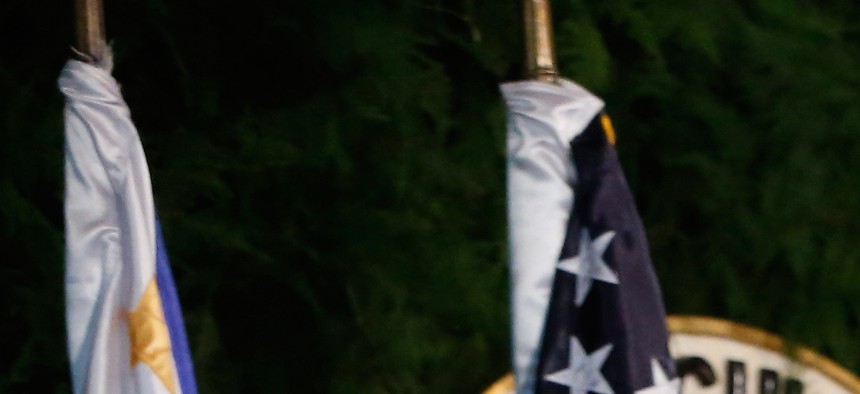
President Barack Obama and Philippine President Benigno Aquino III shake hands at the conclusion of a joint news conference at Malacanang Palace in Manila, Philippines, Monday, April 28, 2014. Charles Dharapak/AP
Obama Boosts Asia Pivot, Expands U.S. Troop Access to Philippines
President Barack Obama announced a 10-year agreement to send additional American troops and equipment through the Philippines. By Ben Watson
President Barack Obama delivered new tangible proof of his much-touted pivot to Asia on Monday by finalizing an agreement with Manila that allows for additional U.S. troops and equipment to rotate through the Philippines’ military bases.
The deal permits greater numbers of Americans to train and modernize the Filipino military over the next 10 years, but does not authorize any new American bases on the Pacific island nation. It is the administration’s latest in a series of bilateral agreements in Southeast Asia toward fulfilling the Defense Department’s strategy of seeking to expand U.S. military access to Asian ports, bases and airbases stretching from the Indian to Pacific oceans, rather than building new American outposts.
“I want to be very clear,” Obama said, on the last stop of his four-nation Asia tour, “The United States is not trying to reclaim old bases or build new bases. At the invitation of the Philippines, American service members will rotate through Filipino facilities. We'll train and exercise more together so that we're prepared for a range of challenges, including humanitarian crises and natural disasters like [2013’s Typhoon] Yolanda.”
President Benigno Aquino and Obama gave the obligatory caution that the agreement is not intended as a threat to Beijing, which has a standing territorial dispute with Manila over a portion of the South China Sea known in Manila as the West Philippine Sea.
“I think this is going to be a terrific opportunity for us to work with the Philippines to make sure that our navies, our air force are coordinated, to make sure that there's information-sharing to allow us to respond to new threats, and to work with other countries, ASEAN countries --– Australia, Japan,” Obama said of the Enhanced Defense Cooperation Agreement. “My hope is, is that at some point we're going to be able to work cooperatively with China as well, because our goal here is simply to make sure that everybody is operating in a peaceful, responsible fashion.”
U.S. troops had been stationed in the Philippines from before World War II through its independence in 1946. Those bases and personnel remained in place until 1992. For more than a decade, U.S. special operations forces have deployed regularly to the Philippines to suppress terrorist networks like the Abu Sayyaf Group, or ASG, an extremist organization with the support of al-Qaeda.
“We are not a threat militarily to any country,” Aquino said, adding that the Philippine air force lacks even one fighter jet. But his troops will begin training on the V-22 Osprey for disaster response operations.
“We don’t have a comparable aircraft [to the V-22 Osprey],” Aquino said. “We have smaller helicopters. And we had 44 of our provinces devastated by Typhoon Haiyan. Now, the training will not just train our people on how to operate this particular aircraft, but more importantly, even help the Office of Civil Defense, for instance, manage this resource in case a storm or another natural disaster of the scale that transpired does happen.
(Related: Pentagon Pivots Within the Pivot, to Southeast Asia)
Part of the agreement signed Monday includes an additional $145 million from the U.S. Agency for International Development, or USAID, Obama said. That figure comes on top of the previously agreed upon $434 million in aid for development projects through 2016.
“My job as commander-in-chief is to look at what is it that is going to advance our security interests over the long term, to keep our military in reserve for where we absolutely need it,” Obama said. “There are going to be times where there are disasters and difficulties and challenges all around the world, and not all of those are going to be immediately solvable by us.”



